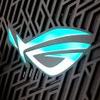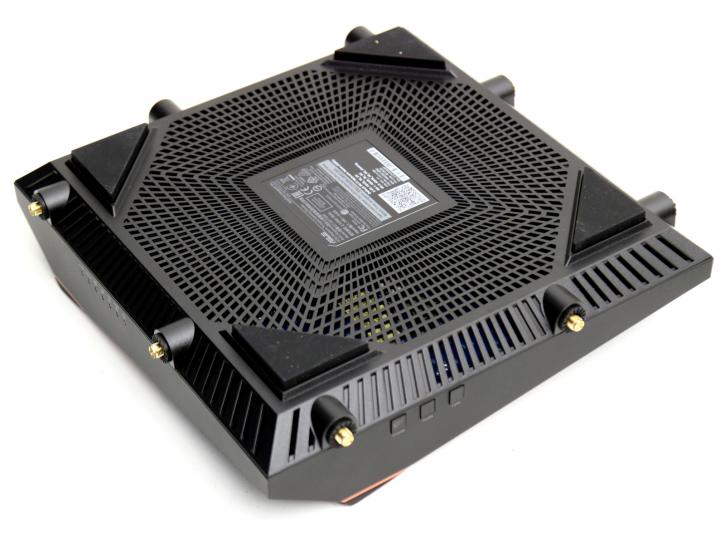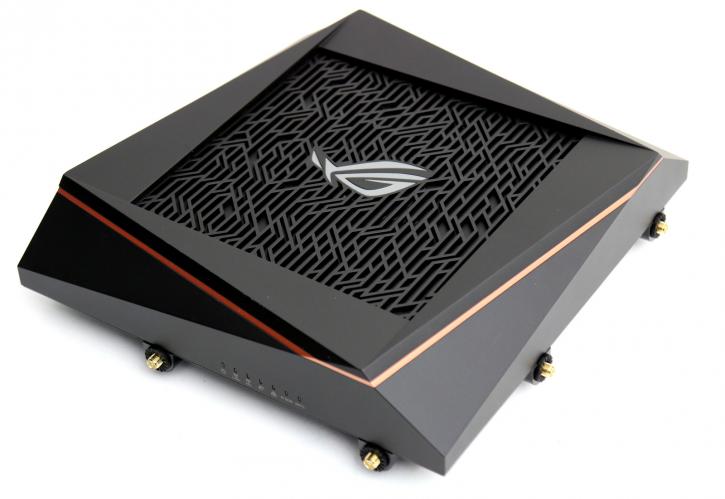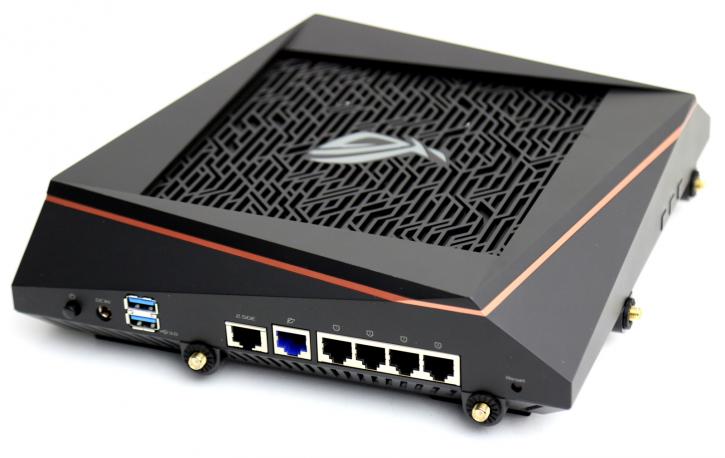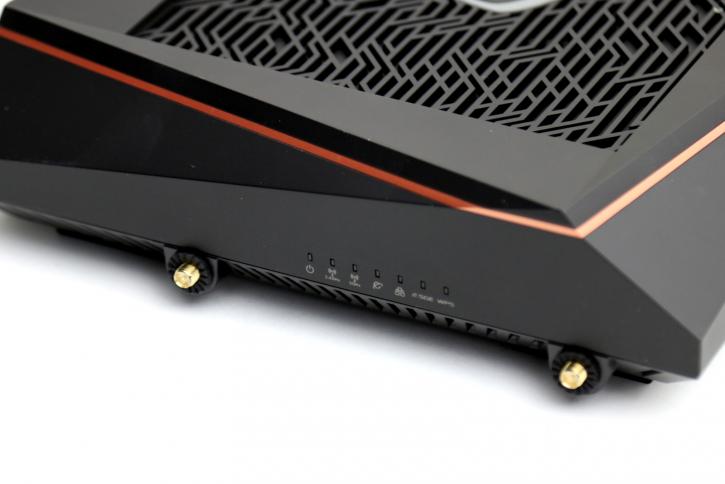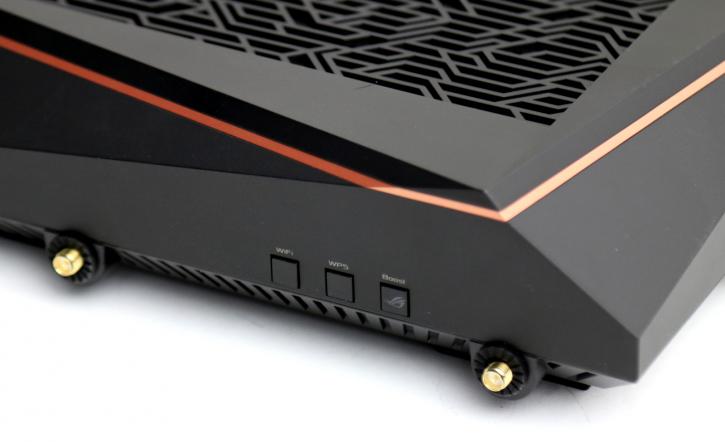Product Showcase
The back side shows many vents for airflow. Under load, we checked, the unit hardly gets luke-warm but ventilation is needed, and is likely also the reason why it cannot be wall mounted. The router is equipped with thick rubber pads that are its feet, this raises the router up a bit to better allow heat to pass through the mesh at the bottom. Let me also make another remark, once you've installed the antennas you'll realize it's a fairly big router, not very practical to tuck away. Then again it's quite something to look at, so you might prefer it in visual sight. When we turn around the router on its belly, you'll notice a sticker. Your security is pre-arranged for you. Each router has a unique WPA2 key for the wireless network. You simply use that key (again, unique to each router) and you are good to go.
Looking at the sides of the unit you can see the antenna connectors for wireless networking, note that high power antennas on all routers are restricted to transmitter power regulations, this is a very expensive multi-band router, ergo there are eight of them.
Connectors:
- 1x WAN (internet) port
- 1x 2.5 Gigabit Port
- 4x Gigabit Ports
- 2x USB 3.0 Ports
- Reset Button
- 12v DC Power
- On/Off Switch
A bit hard to see, but at the front side is a series of LEDs indicating LAN/WAN activity and, sure, power on. The router's USB ports can be used to connect to external storage devices of any capacity. You can use external hard drives formatted in FAT32, or NTFS. The router supports UPnP and DNLA streaming, so content stored on an external drive can be played back by network media streamers.
Located on the side are the standard buttons for quick connect WPS, Wifi and on/off. New is a custom 'Game Boost' mode. This instructs the router to intelligently prioritize gaming traffic ahead of other processes. The mode can be turned on using a physical button on the router, or in the GUI or app interface. The tech will reportedly help eliminate network lag and latency, creating a better online gaming experience (hopefully).
